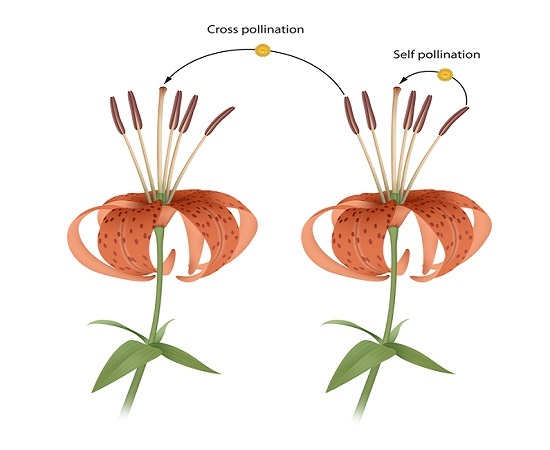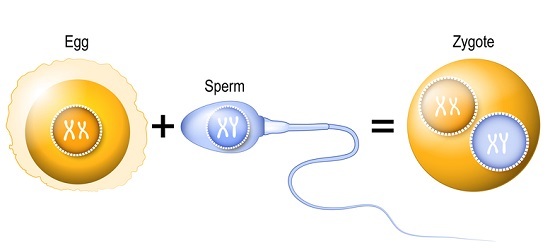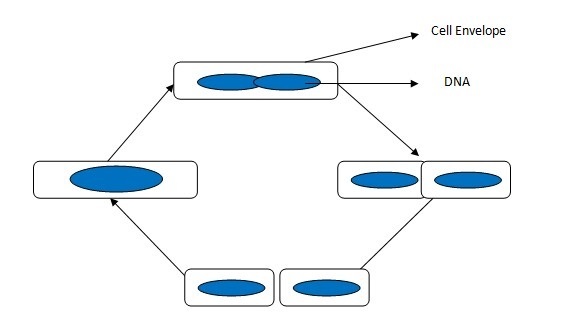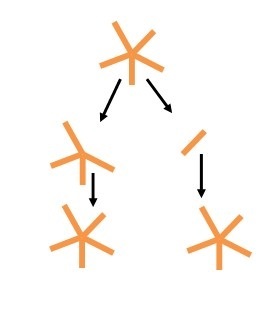
 Data Structure
Data Structure Networking
Networking RDBMS
RDBMS Operating System
Operating System Java
Java MS Excel
MS Excel iOS
iOS HTML
HTML CSS
CSS Android
Android Python
Python C Programming
C Programming C++
C++ C#
C# MongoDB
MongoDB MySQL
MySQL Javascript
Javascript PHP
PHPPhysics
Chemistry
Biology
Mathematics
English
Economics
Psychology
Social Studies
Fashion Studies
Legal Studies
- Selected Reading
- UPSC IAS Exams Notes
- Developer's Best Practices
- Questions and Answers
- Effective Resume Writing
- HR Interview Questions
- Computer Glossary
- Who is Who
Reproduction Modes
Introduction
Reproduction refers to making a new organism that contains a genetic similarity along with some characteristics of species. The new organisms are called offspring that maintain some genetic similarity with the body of the parents. This mode ensures the continuity of different species as well as maintains it from generation to generation.
What is Reproduction?
It is a process of making offspring and is known as the basic forms of creation of life. Mainly two different modes of reproduction are generally seen among the plants and animals such as sexual and asexual modes.
The transferring of genetic characteristics from one generation to another is another feature of genetic reproduction. It guides the maintenance of life cycle and population maintenance on the planet.
Sexual Mode of Reproduction in Plants and Animals
In this mode of reproduction, the gametes cells initially form two different types of organisms, a female and a male. Their combination forms a zygote that comprises most of the genetic characteristics of the parental body.

Figure 1: Pollination in Plants
Sexual Mode of reproduction in Plants
The reproduction part of the plant body is the flower and their reproduction process is mainly involved in the fusion of male gametes namely, pollen with the female gametes called ovules. The process of fusion process leads to the zygote formation as well as the endosperm nucleus that mainly grows into the body seeds of fruits.
Pollination is one of the most important modes of reproduction seen in the body of plants. Pollinating grains getting transferred from another flower to stigma is the main process of plant reproduction. This process is divided into two different processes based on their reproductive organs- self-pollination as well as cross-pollination. Self-pollination is also divided into two different types, autogamy and geitonogamy.
Sexual Mode of reproduction in Animals
Most animals are born through sexual methods and it is the most common mode of reproduction. It mainly involves the fusion of haploid sperm along with the haploid egg for making a diploid zygote that mainly shares the DNA with both bodies of parents. Multiple invertebrates can reproduce through self-fertilisation during which they fertilize eggs along with their sperms.

Figure 2: Fertilisation in Humans
Internal fertilisation refers to the process of fertilization in which a female gamete connects with a male gamete within the female body. Gamete of the male body is released within the female body by the special organs designed for reproduction. Human beings and other mammals use this mode of the reproduction process.
External Fertilisation this type of fertilization mainly happens outside the female body. In this process, a great number of male gametes are released and the process takes place in the surrounding mediums. Mainly fishes along with other amphibians produce their new individuals through this process.
Asexual Mode of Reproduction in Plants and Animals
This mode of reproduction mainly happens without any kind of specific sexual organs and this type of reproduction system is mainly seen in different types of plants, bacteria and other microorganisms.
Asexual Mode of reproduction in Plants
In this process, the plants produce their new individuals with the help of roots, stems and other body parts. There are different modes in the plant body for this process.

Figure 3: Fission
Fission
In this process, two cells of the parent body divide into two and more cells. The unicellular organisms produce a different pattern of cellular process of division like their structure of the cell.

Figure 4: Fragmentation
Fragmentation
This mode of reproduction of plants can be seen in planaria, spirogyra and other types of multi-organisms.
Vegetative Propagation
Most plants reproduce through their vegetative organs like roots, leaves, stems as well as buds. This reproduction procedure can be seen in potatoes, onions and cotton.
Asexual Mode of reproduction in Animals
This process of reproduction can be seen in the animal though the fragmentation, gemmules as well as regeneration. Parthenogenesis is another important mode of this reproduction system.
Differences Between Sexual and Asexual Reproduction
The differences between sexual and asexual reproduction are discussed below.
| Asexual | Sexual |
|---|---|
| Gamete formation does not take place in this process. | Gamete is formed in this process. |
| It does not create any sex organs and it is mainly found in lower organisms. | It creates sex organs and mainly found in higher-class invertebrates as well as all types of vertebrates. |
| The offspring get the genetic features from a single-parent body. | The offspring get the genetic features from both parent bodies. |
| Fertilization does not occur and somatic cells of the parent body are fully involved in this process. | Fertilization occurs and germ cells are fully involved in this process. |
| The process of cell division mainly seen in this mode of reproduction is mitosis. | The process of cell division mainly seen in this mode of reproduction is both meiosis and mitosis. |
Table 1: Differences between sexual and asexual reproduction
Conclusion
The sexual mode of reproduction can be seen in plants or animal bodies. The newly formed individuals who are produced by the mode of this process are partly different from the body of the parents genetically as well as physically.
FAQs
Q1. What is the mode of reproduction of hydra?
Ans. The mode of reproduction of hydra is asexual. It mainly takes place when the hydra becomes fully mature.
Q2. What is sporangium?
Ans. Budding process is mainly seen in different types of fungi and bacteria. The sporangium is the body structure of the spore formation of these organisms.
Q3. What is regeneration?
Ans. It is another process of regenerating cells of a part of the body. This process can be seen when a lizard regenerates its tail again.

